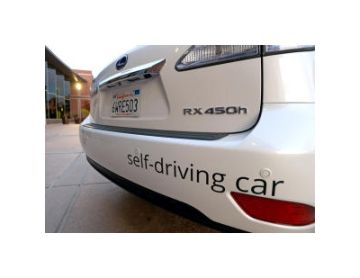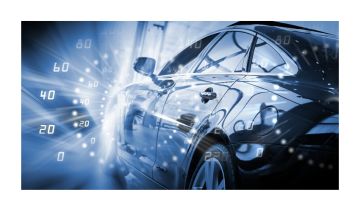|
|  |
|
As technology has become part of our everyday lives we have grown to completely trust and rely on it By Carl Cormier, Senior Driving Instructor and Safety Consultant for Driving Dynamics Technology is constantly shaping and changing our world. It is integrated into our daily lives through personal electronic devices, at work, in our homes and also, of course, in our vehicles. Universities are devoting time and resources to studying and developing technology with the hope of educating the driver and ultimately providing a safer vehicle, and we are seeing new and dedicated areas for testing and improvement in the automobile industry. READ MOREU |
CityLab Advocates for electric vehicles have been saying that passenger vehicles and public transit fleets will have to move from fuel-burning engines to electrification, to avoid the most dire consequences of climate change. So far, progress has been wildly insufficient: In the U.S., close to 200,000 electric vehicles—both plug-in hybrid and battery-electric vehicles were sold in 2017, out of 17,340,700 vehicles. That’s only 1.15 percent of all cars sold in 2017. That’s a 26 percent increase from 2016, and the trend is expected to continue. Read the article at CityLab. |
The Detroit News The future of a federal tax credit that provides up to $7,500 to buyers of electric cars is questionable, as lawmakers in the U.S. Senate have unveiled a pair of bills that would either end the program or boost the cap on the number of credits per automaker can be used. A measure by U.S. Sen. John Barrasso, R-Wy., would eliminate the tax credit for electric cars and institute a new tax on electric cars and alternative fuel vehicles to boost the coffers of the federal Highway Trust Fund that is used to pay for construction projects. A separate measure by U.S. Sen. Dean Heller, R-Nev., would keep the electric vehicle tax credit in place and lift the cap that is looming over General Motors Co. and Tesla Inc. Read the article at The Detroit News. |
MSN Automakers spend more than $14 billion a year on advertising in the U.S., but not many of the ads promote fuel efficiency or safety features—two attributes consumers say they most value when shopping for a new car, a new analysis shows. “Consumers clearly want cars and trucks with better mileage, but automakers are steering them in a completely different direction,” David Friedman, vice president of advocacy at Consumer Reports says. “Adding insult to injury, they also aren’t offering much choice in the showrooms.” Read the article at MSN. |
|
| |
 NGT News Attaining environmental benefits and lower cost of ownership are driving more commercial fleets to electrify, according to new study released by UPS and GreenBiz. Instead of undertaking a large-scale fleet overhaul, many companies will prioritize electric options when replacing vehicles and even consider electric leasing options to mitigate the initial purchase price. “The challenges of cost and infrastructure requirements can be daunting, but we’ve begun to see solutions emerge,” says Scott Phillippi, UPS’ senior director of automotive maintenance and engineering. “In the U.S., we recently ordered 50 electric-powered delivery trucks that we anticipate will be at cost parity with conventional diesel-powered vehicles.” Read the article at NGT News. |
|
 The Washington Post At their new company, Aurora Innovation, the three former executives at Google, Tesla and Uber are urging their own self-driving car industry to face a reality check, saying lofty promises risk confusing passengers and dooming the technology before it can truly take off. The “entire industry” needs “to be more truthful about our capabilities,” said Sterling Anderson, an Aurora co-founder and former head of Tesla’s “Autopilot” system. “We’re talking about building trust in the public. You don’t do that by overstating what the system can and can’t do.” Read the article at The Washington Post. |
|
 The New York Times When fully autonomous driving for privately owned vehicles becomes available, the potential for a car to sense a driver’s illness and head for a hospital becomes a reality. Few artificial intelligence applications carry the responsibility of automotive safety systems. “I honestly believe we are still scratching the surface of applying the technologies of deep learning and neural networks,” said Sachin Lulla, IBM’s Automotive Leader. “As computing increases, we will see this scale to true potential. The big issue is to perfect autonomous driving with human driving. Autonomous vehicles driving with other A.V.s seems far along, but when there is someone on a bike it gets tricky.” Read the article at The New York Times. |
|
|
|

